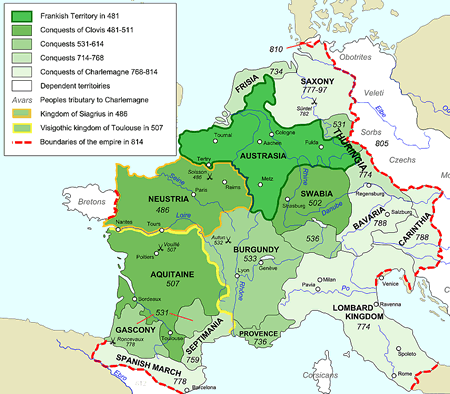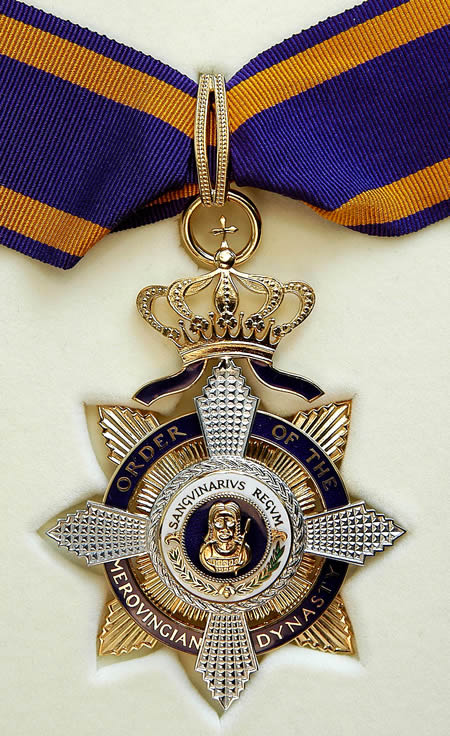 |
| Merovingian Dynasty |
The Merovingian dynasty emerged as the Roman Empire was declining. The name Merovingian was derived from the name Merovius, the founder of the Merovingian dynasty, who was the powerful leader of a group of Franks known to the Romans as Salians from 448 to 457.
Because of their penchant for wearing long hair, the Merovingian kings were known as the long-haired kings. The Merovingian dynasty ruled parts of present-day France and Germany from the fifth century until the eighth century, more specifically from c. 448 to 751. They are often regarded as the first kings of Frankish (or French) race.
The Merovingian kings had a reputation as builders of the greatest of the early medieval successor states. The origins of France were first discerned in the fifth century, when the Merovingian dynasty was in power over the Frankish kingdom.
  |
They also set the stage for Charlemagne’s later success in building his empire. The Franks were a minority in the Merovingian kingdom, which expanded as King Clovis I conquered neighboring regions.
He was responsible for uniting most of Gaul situated north of Loire in 486. War was waged on multiple fronts over many years against the Visigoths, the Saxons, and the Alamanni. In the Battle of Vouille in 507, the Visigoths were defeated at Toulouse.
Burgundy was captured in 534 and the alpine region of Alamanni was added to their realm in 536 after multiple campaigns. As a result of this rapid expansion under the Merovingian dynasty, Gallo-Roman and Germanic subjects surrounded the Franks.
 |
| marovingian badge |
Adhering to the law of the Franks, when a father died, his land was divided among his sons. Since the entire kingdom was considered the king’s land, Clovis I partitioned his realm among his four sons. Upon his death there were four kings who ruled his kingdom, but they remained united.
However subsequent partitions and repartitions complicated matters as rivalries concerning land often resulted in bloody wars on issues of political succession, especially toward the end of Merovingian reign from 561 to 613.
The Merovingian kings were outwardly Christian after Clovis I converted to Catholicism, following the conversion of his wife in 497, but their practices veered toward paganism.
   |
The royalty was thought to have divine powers, mixed with a strong sense of charisma and a magical allure. The most important consequence of this landmark conversion was that the Frankish tribes soon followed suit and adopted Christianity.
By converting to Catholicism, an alliance was forged between the Frankish kingdom and the Roman Catholic Church. Saint Boniface (675–754), an eminent English missionary, is credited with converting the Germans to Christianity.
As the Merovingian dynasty declined in the eighth century, the mayor of Austrasia who actually served in the name of the Merovingian king gained more power for himself. The mayor, Charles Martel, grandfather of the future emperor Charlemagne, led the Frankish army to a victory against the Muslim invaders in 732 at the Battle of Tours.
Although Charles Martel never adopted the royal title himself, his son Pepin the Short became the first king of the Carolingian dynasty, which succeeded the Merovingian dynasty.